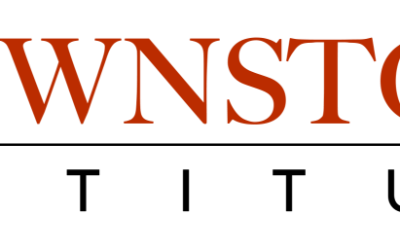On Friday, Larry Hill, the Canadian Wheat Board (CWB) chairman, told the National Farmers Union — a leftist farm organization — that “there’s a guarantee that a Canadian Wheat Board cheque is going to be good, and in uncertain times it’s not an insignificant guarantee.”
That wheat board cheque is also going to be about $18,000 a year less per farmer than American grain companies would have paid for the same crops, but at least it’s guaranteed. Yep, that’s a significant comfort to farmers, I’m sure.
The $18,000 figure comes from a C. D. Howe Institute study released last week showing that over the past three years, the CWB was paying Western farmers up to $40 a tonne less than what comparable American farmers were being paid by private grain companies.
The board, of course, disputes the findings. It says the institute was not making an “apples to apples” comparison, that it no longer runs the marketing program examined (although it still runs an almost identical one) and that it is unfair to compare the prices it obtains for grain to American prices.
It neglected to say which nation’s prices would make a suitable comparison, but one supposes the board would prefer Canada-to-Vietnam evaluations or Canada-to-Zimbabwe, perhaps.
The board is never happy with outside examinations of its practices. That’s because almost no outside study of the CWB ever finds that it does producers much good. Indeed, nearly all external studies of the board’s practices and results have been critical.
The only studies that ever please board executives and their supporters seem to be internal ones, because they alone agree with the blind-faith belief that only if Western wheat and barley farmers market their crops collectively through the board will they obtain the highest returns.
Shortly after I started covering the board in the mid-1990s, a Saskatchewan economist produced a report saying the CWB often obtained higher prices for farmers than they would have been able to achieve acting on their own. They liked that one. Of course, they had paid for it and let the economist look at their books only from periods they had carefully selected.
The surprise would have been if his findings had not pleased them.
And the 2002 Auditor-General’s report pleased them. Admittedly, Sheila Fraser’s investigation found the CWB to be one of the weakest-managed Crown corporations her office had ever examined. Still, she proclaimed its books to be tidily kept and the CWB to have a good reputation internationally.
Of course, she was prevented from examining whether the board’s grain deals returned more for farmers, or less, but never mind that trivial detail.
In the late 1990s, when two respected historians found that granting the board a monopsony over Western grain was always about controlling inflation and grain exports and never about maximizing returns for farmers, the board denounced them as revisionists.
Two years ago, the George Morris Centre, an independent agricultural think-tank based in Guelph, Ont., showed that value-added grain industries in the West “lagged the U. S. and Ontario” to the tune of $3-billion and 12,500 jobs in under a decade. Why? Because the wheat board forbids grain growers to sell directly to pasta companies, flour mills or factory backers. It makes them sell through the board at an exorbitant premium; a premium so high it makes the establishment of many value-added businesses uneconomical in the West.
In response, the board charged the George Morris Centre had used flawed economic models.
Earlier this year, Informa Economics, a highly regarded agricultural market analysis firm, examined CWB sales over the past 20 years and found the board controlled too small a percentage of world wheat or barley volume to exert upward pressure on prices. Indeed, the study found that over the past five years, the board’s inefficient marketing practices had cost Western farmers $3-billion.
The board scoffed that these results could not be relied on because they had been bought and paid for by –cringe– Alberta’s government.
The CWB has become as much an economic cult as a Crown marketing agency. So it is never going to admit it is a drag on farmers or the West. But at some point taxpayers have to wake up to the fact that they are subsidizing Western farmers to the tune of $1-billion or more a year and they wouldn’t have to if the federal government would simply make marketing grain through the board optional, rather than compulsory.


